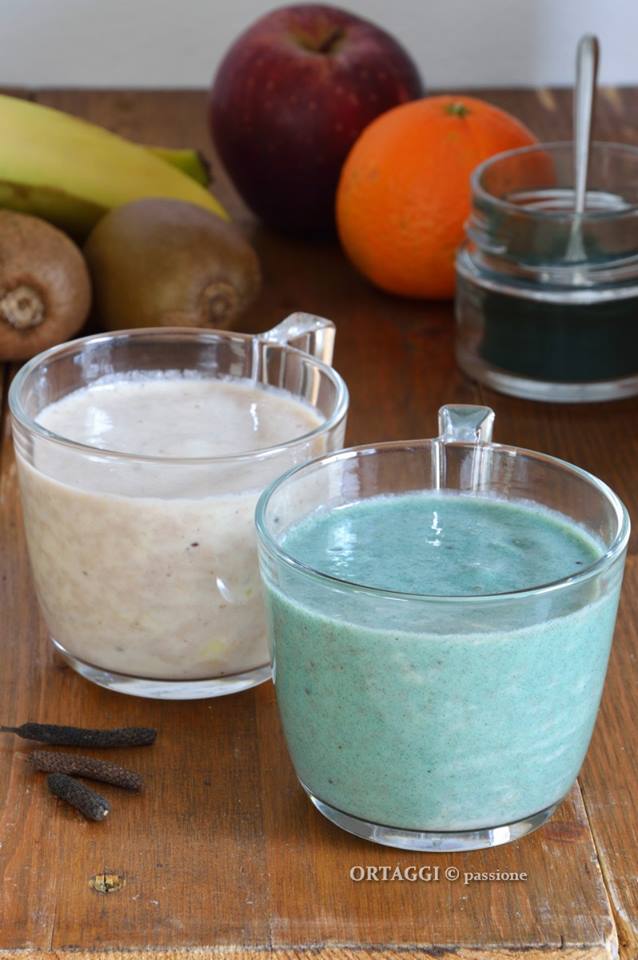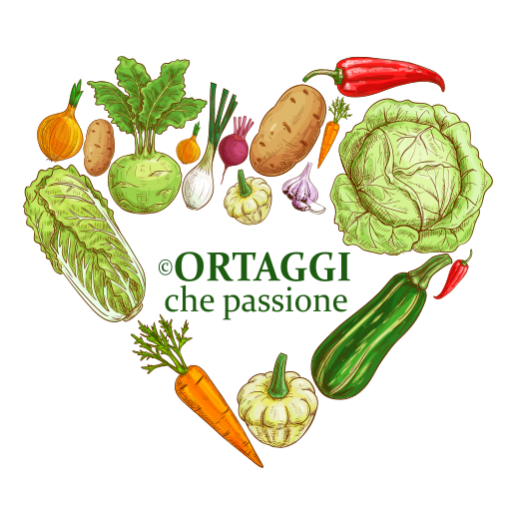Homemade smoothies are fresh, tasty, and healthy, perfect for breakfast and snack time. Making them at home with a hand blender is easy and super fast; just make sure to use only soft or squeezable fruit. DIY smoothies are rich in antioxidants and vitamins, a great way to get even the little ones at home to enjoy fruit. Preparing them at home without a juicer is really easy.
Are smoothies dietary and slimming? Are they slimming drinks? It depends on the fruit and liquid you add, how much you drink, and if you only eat that.
Are smoothies energetic and protein-rich? It depends on the fruit and flavorings you use.
For a lactose-free version, use plant-based milk (amaranth, oat, coconut, almond, hazelnut, rice, soy, or another type) or natural water or orange juice.
SEASONALITY: perfect for every season. At the bottom of the page, you will find the Italian seasonality of individual fruits.
RECIPES with fruits

- Difficulty: Easy
- Cost: Economical
- Preparation time: 10 Minutes
- Portions: 1 glass
- Cooking methods: No cooking
- Cuisine: Healthy
- Seasonality: All seasons
- Energy 133.57 (Kcal)
- Carbohydrates 24.59 (g) of which sugars 14.58 (g)
- Proteins 3.02 (g)
- Fat 3.55 (g) of which saturated 0.54 (g)of which unsaturated 2.75 (g)
- Fibers 5.19 (g)
- Sodium 29.95 (mg)
Indicative values for a portion of 210 g processed in an automated way starting from the nutritional information available on the CREA* and FoodData Central** databases. It is not food and / or nutritional advice.
* CREATES Food and Nutrition Research Center: https://www.crea.gov.it/alimenti-e-nutrizione https://www.alimentinutrizione.it ** U.S. Department of Agriculture, Agricultural Research Service. FoodData Central, 2019. https://fdc.nal.usda.gov
Homemade Smoothies
Quantities for a 210-gram glass of fruit smoothie
- banana (ripe – 160 g)
- 1/4 cup plant-based milk (or dairy, or water)
- banana (ripe – 60 g)
- kiwi (soft – 100 g)
- 1/4 cup plant-based milk (or dairy, or water)
- Half banana (ripe – 60 g)
- kiwi (soft – 50 g)
- apple (50 g)
- 1/4 cup plant-based milk (or dairy, or water)
- banana (110 g)
- 1/4 cup strawberries (untreated or organic)
- 1/4 cup plant-based milk (or dairy, or water)
- Half banana (ripe – 60 g)
- Half peach (50 g)
- 1/4 cup strawberries (untreated or organic)
- 1/4 cup plant-based milk (or dairy, or water)
- peach (100 g)
- Half banana (ripe – 60 g)
- 1/4 cup plant-based milk (or dairy, or water)
- 1/2 cup raspberries (organic)
- 1/2 cup blackberries (untreated)
- 1/4 cup plant-based milk (or dairy, or water)
- lemon (optional)
- 2 peaches (small – 160 g)
- 1/4 cup plant-based milk (or dairy, or water)
- 1 cup avocado (well ripe)
- 5 leaves basil (or mint)
- to taste lemon juice
- 1/4 cup plant-based milk (or dairy, or water)
- Half teaspoon spirulina algae
- to taste pepper (long – freshly ground)
- 1/3 teaspoon chili powder
- Half teaspoon cinnamon powder
- 1/3 teaspoon vanilla (powder or seeds)
- Half teaspoon turmeric powder (with a pinch of black pepper)
Tools
- Immersion Blender Hand Blender
Homemade Smoothies with Hand Blender
Fruit Smoothies
Wash the chosen fruit well, peel it if necessary.
Then place the pieces of soft fruit in a tall and narrow container (perfect is the hand blender’s glass), the harder the fruit, the smaller the pieces should be (example: the apple).
With the hand blender, reduce everything to a pulp, adding the necessary amount of liquid if needed to facilitate the operation.
Add the chosen aroma and mix to blend the flavors.
Add sugar, honey, malt, stevia, maple syrup, agave, date, corn, rice syrup… only if necessary.
ADVICE
Homemade smoothies with the immersion blender can be made only with fresh, ripe, and SOFT fruit. Avoid using hard fruit or vegetables; you might break the hand blender.
TRY mixing soft fruit with some vegetables of your choice, slightly fibrous and soft, maybe pre-boiled (perfect is baked sweet potato).
If you have a JUICER try the Beetroot Juice Extract.
How to remove air from the smoothie?
Smoothies are not recommended for young children as they can cause them colic or other discomforts.
For adults, just remove the air by stirring the smoothie several times and wait at least fifteen minutes before drinking it so the air bubbles disappear.
STORE homemade smoothies
Consume fruit juices promptly, within the day of production to maintain properties and freshness.
SEASONALITY of Italian fruits
#apricots – from May to August
#Italian bananas – from April to November
#barattiere – from May to August
#carosello – from May to August
#cherries – from May to early August
#figs – from July to October
#strawberries – from April to September
#berries – all summer
#raspberries – from June to August
#mapo – from October to January
#melon – from June to September
#blueberries – from June to September
#miyagawa satsuma – from September to December
#blackberries – from July to October
#nashi – from August to December
#pears – from June to December
#peaches – from May to September
#oranges – from October to July
#avocado – from October to June
#clementines – from September to March
#kiwi – from September to April
#mango – from late July to November
#apples – from August to November
Exotic fruits, available all year: pineapple, bananas, dragon fruit (pitaya or pitahaya), passion fruit, papaya, plantain.
Frequently Asked Questions
What is the difference between a frappe and a smoothie?
The difference between a frappe and a smoothie is mainly in consistency and ingredients. The frappe is often creamier due to the ice cream in its base or crushed ice, making it colder. The smoothie has a lighter consistency, based on ingredients like fresh fruit.
What is the difference between a smoothie and a milkshake?
The smoothie usually has a liquid base like milk or water, giving it a light consistency. Conversely, a milkshake often uses a thicker and creamier base, like yogurt, giving the drink a velvetier and richer consistency.
What is the difference between a juicer and a smoothie?
The juicer (or extractor) is a device that extracts juice from fruit and vegetables, separating the liquid from pulp and fibers. The result is a light juice free of solids.
The smoothie is prepared using a blender that mixes all the ingredients together, including pulp and fibers, creating a thicker and denser drink. In a smoothie, the entire fruit or vegetable is used, retaining the fiber and other nutrients present in the pulp.

